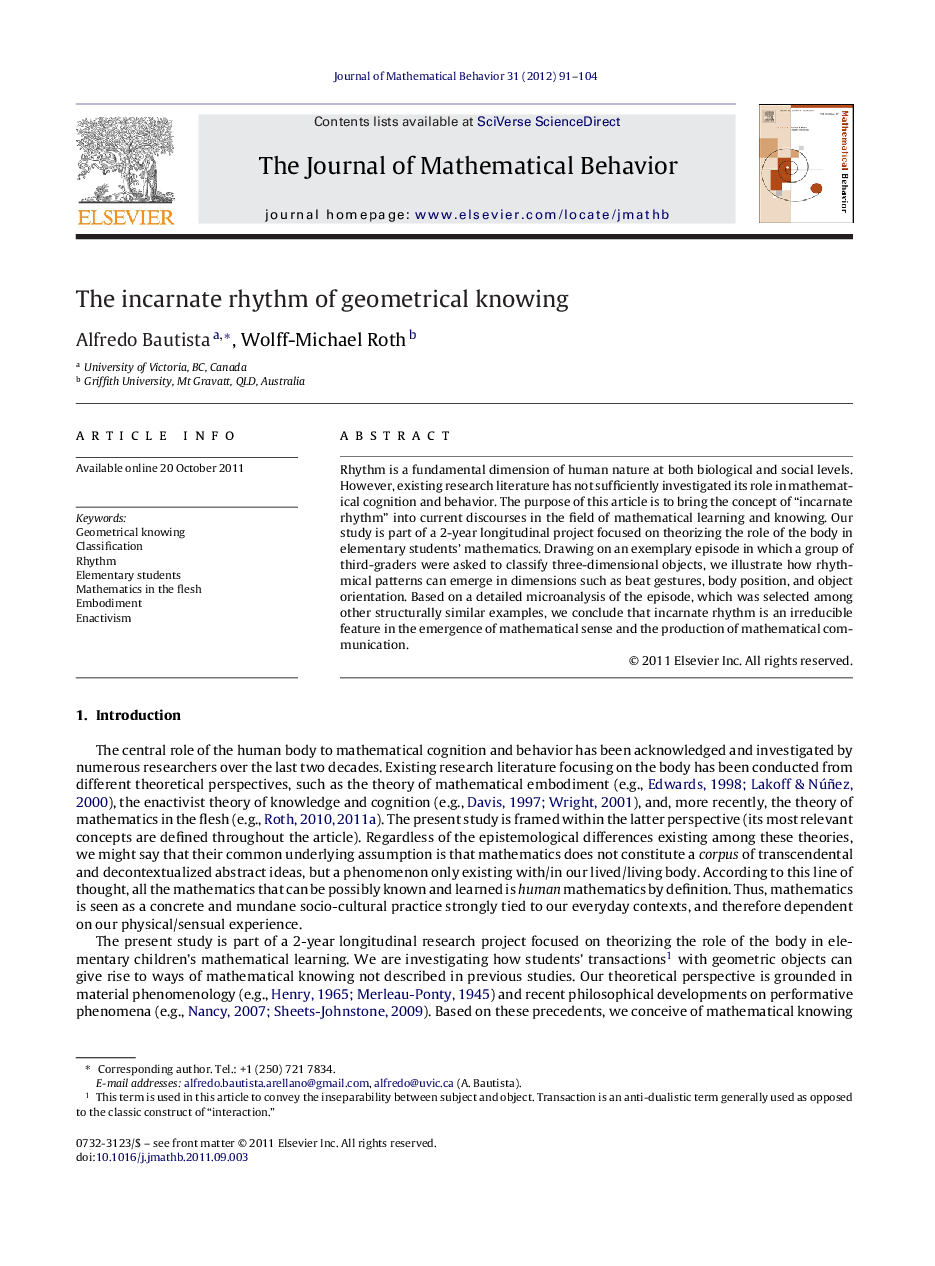| Article ID | Journal | Published Year | Pages | File Type |
|---|---|---|---|---|
| 360726 | The Journal of Mathematical Behavior | 2012 | 14 Pages |
Rhythm is a fundamental dimension of human nature at both biological and social levels. However, existing research literature has not sufficiently investigated its role in mathematical cognition and behavior. The purpose of this article is to bring the concept of “incarnate rhythm” into current discourses in the field of mathematical learning and knowing. Our study is part of a 2-year longitudinal project focused on theorizing the role of the body in elementary students’ mathematics. Drawing on an exemplary episode in which a group of third-graders were asked to classify three-dimensional objects, we illustrate how rhythmical patterns can emerge in dimensions such as beat gestures, body position, and object orientation. Based on a detailed microanalysis of the episode, which was selected among other structurally similar examples, we conclude that incarnate rhythm is an irreducible feature in the emergence of mathematical sense and the production of mathematical communication.
► Geometric knowing and rhythm are intertwined phenomena. ► Rhythm constitutes both resource and outcome of children's geometric activity. ► Rhythmical patterns can emerge in dimensions such as beat gestures, body position, and object orientation. ► Rhythm is an integral dimension of mathematics in the flesh.
